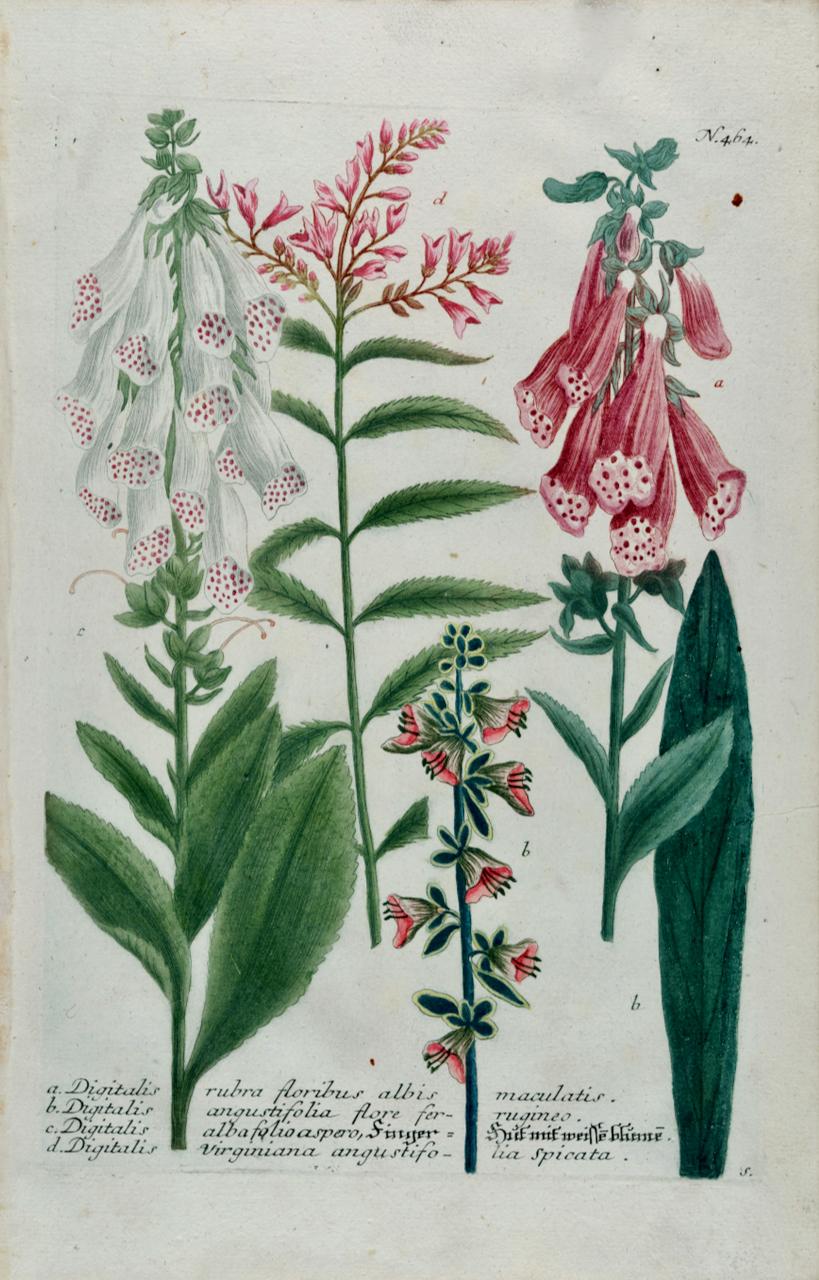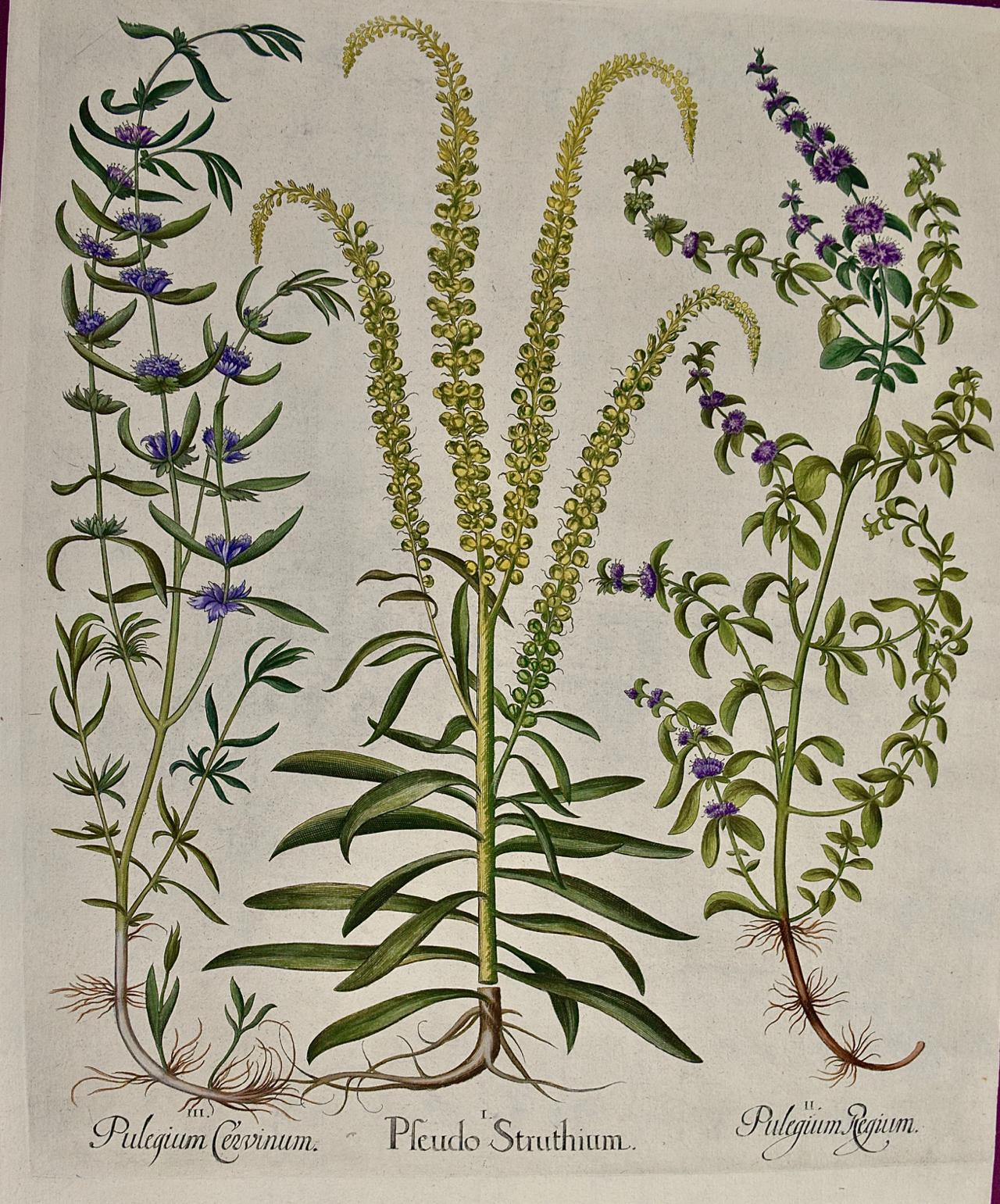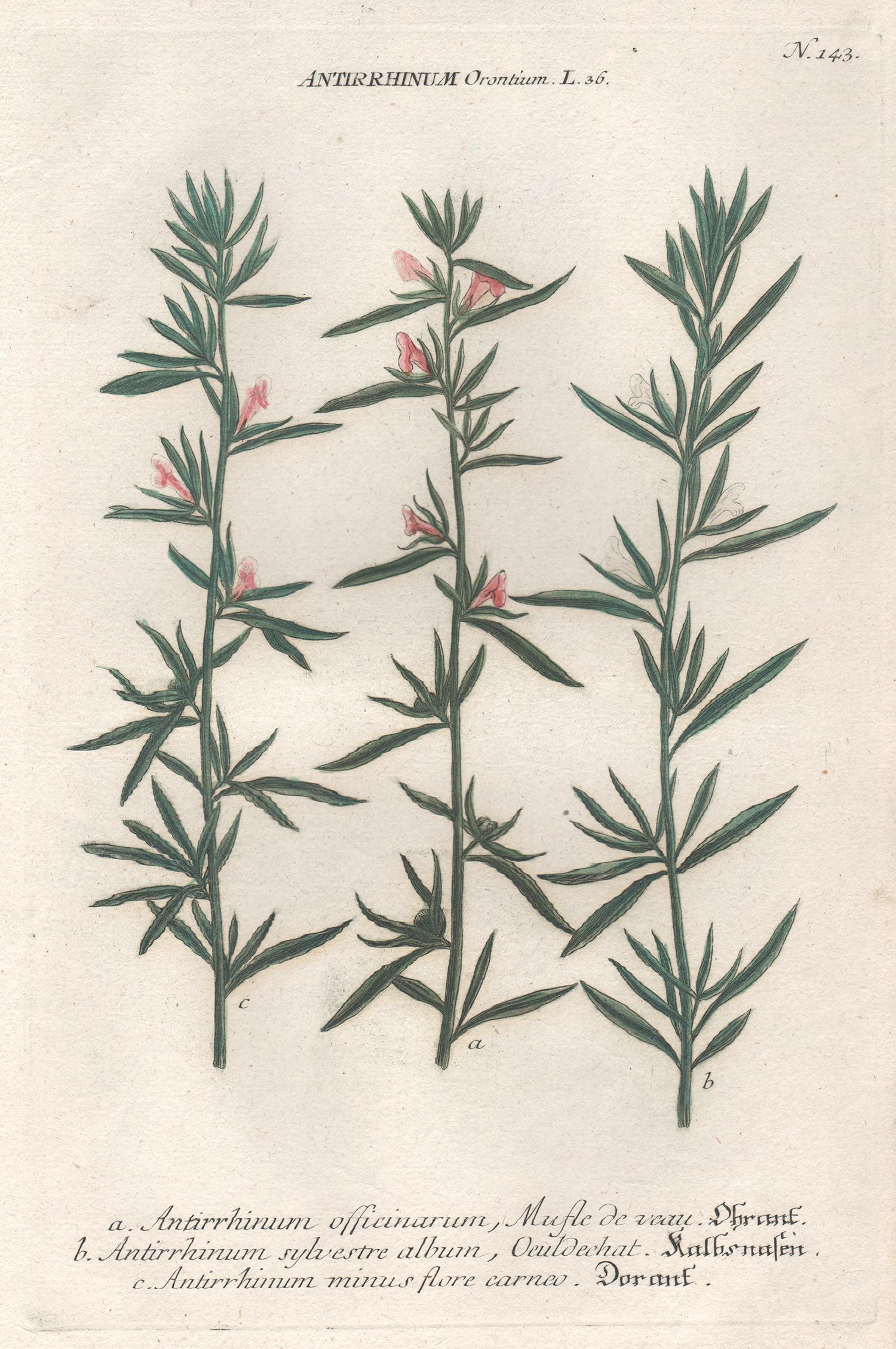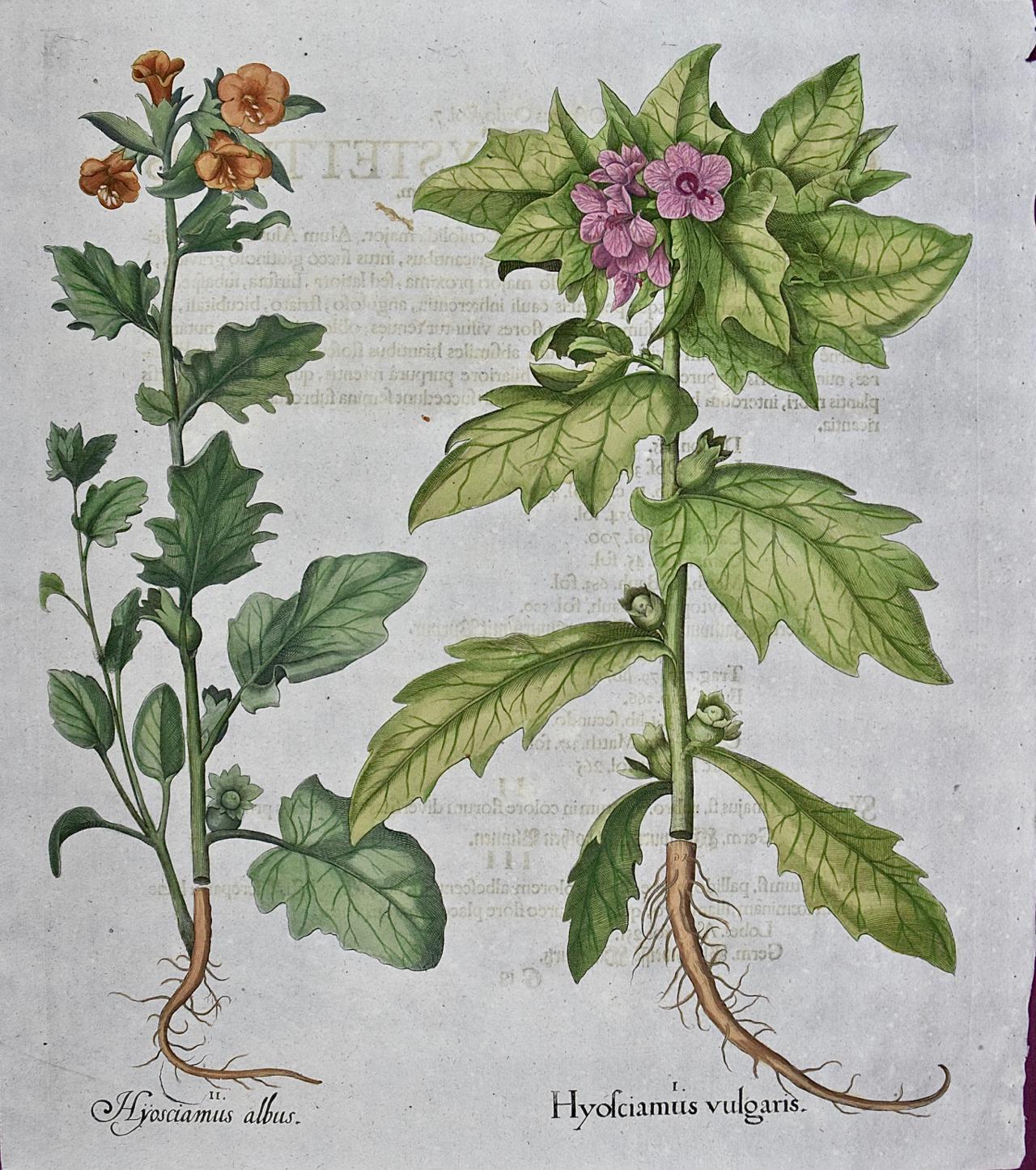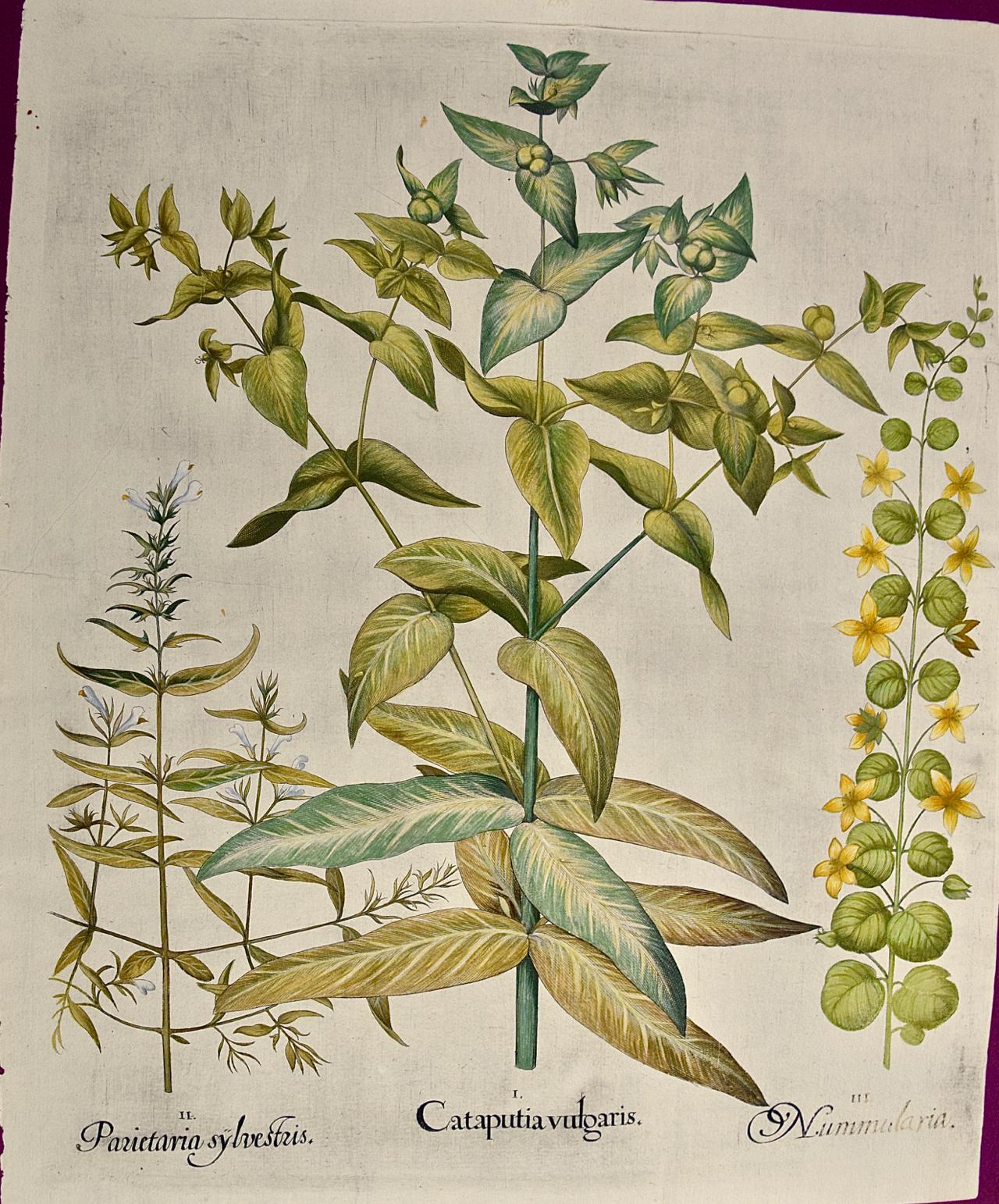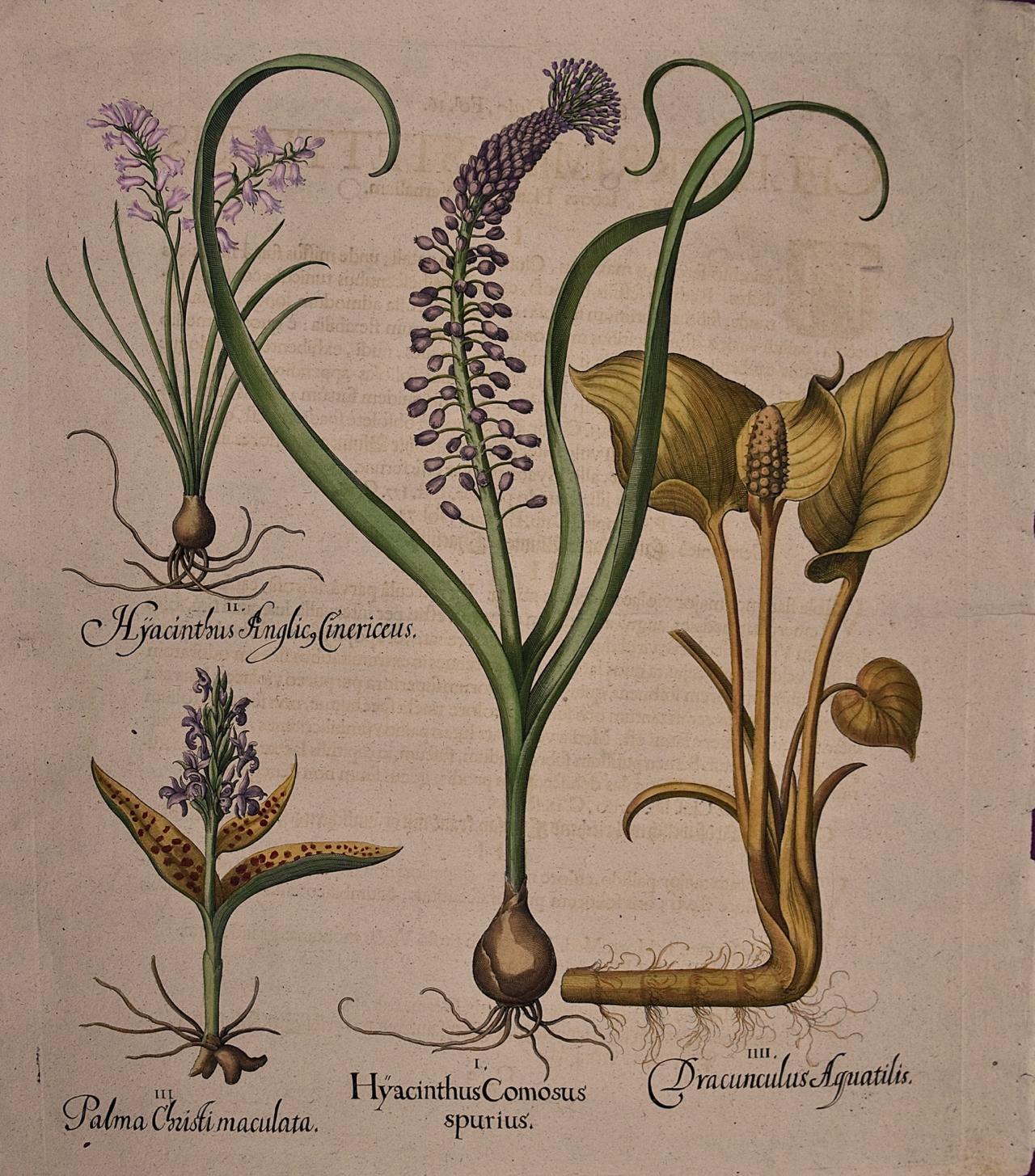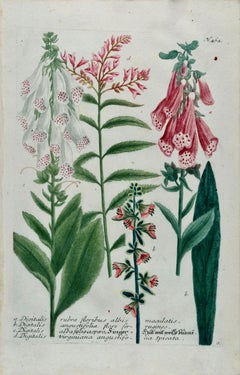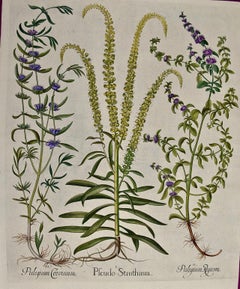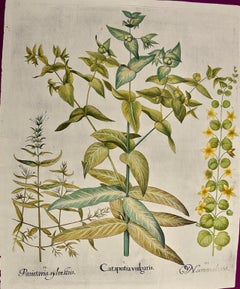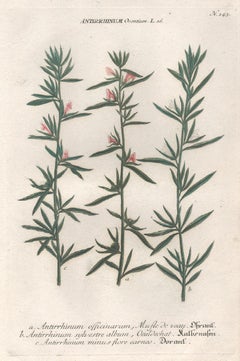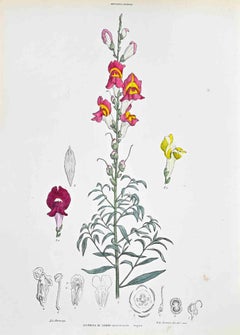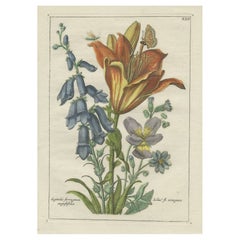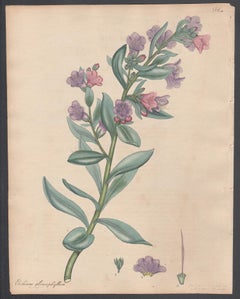Items Similar to Flowering Digitalis Plants: An Original 17th C. Botanical Engraving by E. Sweert
Want more images or videos?
Request additional images or videos from the seller
1 of 9
Emanuel SweertFlowering Digitalis Plants: An Original 17th C. Botanical Engraving by E. Sweert1612
1612
$1,100
$1,37520% Off
£838.02
£1,047.5220% Off
€956.38
€1,195.4720% Off
CA$1,545.76
CA$1,932.2020% Off
A$1,684.61
A$2,105.7620% Off
CHF 892.07
CHF 1,115.0920% Off
MX$20,233.90
MX$25,292.3820% Off
NOK 11,293.83
NOK 14,117.2820% Off
SEK 10,383.56
SEK 12,979.4520% Off
DKK 7,143.07
DKK 8,928.8420% Off
About the Item
This beautiful and extremely rare early 17th century hand-colored copperplate engraving of four flowering Digitalis plants by the Dutch artist and botanist Emanuel Sweert is plate 6 in his publication "Florilegium amplissimum et selectissimum, quo non tantum varia diversorum florum prestantissimorum...", published initially in 1612. Six editions were published in Frankfort, Germany and in Amsterdam, Netherlands between 1612 and 1647.
This beautiful hand-colored engraving is printed on laid, chain-linked paper. The sheet measures 15.5" high and 10.38" wide. There is some toning and a few spots, the most prominent in the lower left corner, as well as a very short (2-3 mm.) repaired tear at the right edge of the sheet. The engraving is otherwise in very good condition.
Emanuel Sweert (1552-1612) was a Dutch painter and botanist. He lived in a period when new plants from across the world were being introduced to Europe via Dutch, English and French ships. To meet the interest in plants by the public, nurseries were being established by wealthy merchants in order to meet the demand. Botanical illustrations and publications were produced as nursery inventory catalogues, as well as academic and educational descriptions of these newly discovered plants. Sweert prepared his Florilegium as a guide of his available stock for the Frankfurt Fair of 1612. At the time of the fair, Sweert was employed by Emperor Rudolf II as head of his gardens in Vienna. The plates in his publication depicted some 560 bulbs and flowers. There was great enthusiasm among the public for these plants and for Sweert's publication. His depiction of tulips contributed to the later Dutch "Tulipomania" collecting and investment craze.
References: Cf. Hunt 196; cf. Nissen BBI 1920 &1922; cf. Stafleu & Cowan TL2 13.546.
- Creator:Emanuel Sweert (1552 - 1612, Dutch)
- Creation Year:1612
- Dimensions:Height: 15.5 in (39.37 cm)Width: 10.38 in (26.37 cm)
- Medium:
- Movement & Style:
- Period:Early 17th Century
- Framing:Framing Options Available
- Condition:
- Gallery Location:Alamo, CA
- Reference Number:Seller: # 39391stDibs: LU1173214674132
About the Seller
5.0
Platinum Seller
Premium sellers with a 4.7+ rating and 24-hour response times
Established in 2011
1stDibs seller since 2019
298 sales on 1stDibs
Typical response time: 1 hour
- ShippingRetrieving quote...Shipping from: Alamo, CA
- Return Policy
More From This Seller
View AllFlowering Digitalis Plant: 18th C. Hand-colored Botanical Engraving by Weinmann
By Johann Wilhelm Weinmann
Located in Alamo, CA
This hand-colored botanical mezzotint and line engraving by Johann Wilhelm Weinmann (1683-1741) is entitled "Digitalis rubra floribus albis maculatis. Digitalis angustifolia flore fe...
Category
Mid-18th Century Naturalistic Still-life Prints
Materials
Engraving, Mezzotint
Flowering Peppermint Plants: A 17th C. Besler Hand-colored Botanical Engraving
Located in Alamo, CA
This is a hand-colored copper plate engraving entitled "Pulegium Cervinum, Pseudo Pulegium Struthium, Pulegium Regium", depicting flowering Peppermint, Weld and Pennyroyal plants respectively from Basilius Besler's landmark work, Hortus Eystettensis (Garden at Eichstatt), first published in 1613 in Eichstatt, Germany near Nuremberg and later in 1640 and 1713.
This beautiful colorful engraving is printed on thin laid chain-linked paper. There are subtle creases in the right upper corner, very common with Besler's relating to the drying of the paper during its production. The right margin is thinner than the others. The print is otherwise in excellent condition with striking hand-coloring.
Basilius Besler (1561–1629) was an apothecary and botanist. He was curator of the Willibaldsburg Castle garden of Johann Konrad von Gemmingen, prince bishop...
Category
1640s Academic Still-life Prints
Materials
Engraving
Flowering Henbane : A Besler 18th Century Hand-colored Botanical Engraving
Located in Alamo, CA
This is a hand-colored copper plate engraving depicting flowering "Hyosciamus albus and Hyosciamus vulgaris" (Henbane) plants from Basilius Besler's landmark work, Hortus Eystettensi...
Category
Early 18th Century Academic Still-life Prints
Materials
Engraving
Flowering Lily Plants: A 17th C. Besler Hand-colored Botanical Engraving
Located in Alamo, CA
This is a hand-colored copper plate engraving entitled "Cataputia Vulgaris, Parietaria Sylvestris, Nummularia", depicting flowering Spanish Nut, Yellow Turk's-cap Lily, Yellow Turk's...
Category
1640s Academic Still-life Prints
Materials
Engraving
$2,540 Sale Price
20% Off
Flowering Hyacinth & Calla Plants: A Besler Hand-colored Botanical Engraving
Located in Alamo, CA
This is a hand-colored copper plate engraving depicting flowering "Hyacinthus Comosus Spurius" (Hyacinth), "Hyacinthus Anglicus" (Blue Hyacinth), "Palma ...
Category
Early 18th Century Academic Still-life Prints
Materials
Engraving
Flowering Pea Plant: An 18th C. Hand-colored Botanical Engraving by J. Weinmann
By Johann Wilhelm Weinmann
Located in Alamo, CA
This hand-colored botanical mezzotint and line engraving by Johann Wilhelm Weinmann (1683-1741) is entitled "A. Lathyrus Major Peremis Richern B. Lathyrus Narbonensis Flore Albescen...
Category
Mid-18th Century Naturalistic Still-life Prints
Materials
Engraving, Mezzotint
You May Also Like
Antirrhinum Orontium - 18th century Weinmann botanical plant flower engraving
By Johann Wilhelm Weinmann
Located in Melbourne, Victoria
'Antirrhinum Orontium'
Mezzotint printed in colours. Circa 1740.
From Johann W Weinmann's Phytanthoza Iconographia, published in Regensburg 1737-45. The first botanical series to u...
Category
18th Century Naturalistic Still-life Prints
Materials
Engraving
The Snapdragon - Lithograph by Vincenzo Tenore - 1870s
Located in Roma, IT
Lithograph hand watercolored.
Plate from "Atlante di Botanica popolare ossia Illustrazione di Piante Notevoli di ogni famiglia" (Atlas of popular botany or illustration of notable p...
Category
1870s Modern Figurative Prints
Materials
Lithograph
Old Botany Print of the Orange Lily & Digitalis Ferruginea Angustifolia, 1794
Located in Langweer, NL
Untitled antique botany print of Lilium orengiaco (the orange lily) and Digitalis ferruginea angustifolia.
This print originates from 'Nederlandsch Bloemwerk' by J.B. Elwe. This ...
Category
Antique 1790s Prints
Materials
Paper
$323 Sale Price
25% Off
Echium Glaucophyllum, Henry Andrews antique botanical flower engraving print
By Henry C Andrews
Located in Melbourne, Victoria
'Echium Glaucophyllum - Sea-green-leaved Viper's Bugloss'
Native of Cape of Good Hope, South Africa.
Original copper-line engraving with original hand-colouring from Henry Andrews...
Category
Early 19th Century Naturalistic Still-life Prints
Materials
Engraving
Elegant Garden Flower Engravings – Antique Botanical Prints, London 1828
Located in Langweer, NL
Pair of Hand-Colored Botanical Engravings of Garden Flowers, London 1828
Description:
This beautifully preserved pair of early 19th-century botanical engravings exemplifies the arti...
Category
Antique 1820s British Prints
Materials
Paper
Antique Botanical Flower Studies by Benjamin Maund, London c.1836
Located in Langweer, NL
Pair of Botanical Engravings from The Botanic Garden by B. Maund, London c.1836
A beautifully matched pair of hand-colored botanical engravings from *The Botanic Garden* by Benjamin...
Category
Antique 1830s British Prints
Materials
Paper
More Ways To Browse
Botanical Prints 17th Century
Andy Warhol Brooklyn Bridge
Ann Reeves
Antony Gormley Horizon Field
Arthur John Strutt
Bill Ogden
Bob Dylan Train Tracks
Brooklyn Bridge Warhol
Buell Whitehead
Calder Soleil
California Wine Posters
Cannes Vintage Travel Poster
Charles Wysocki
Childe Hassam On Sale
Currier Ives New York
Dali Espana
Dali Normandy
Damien Hirst Politeness
